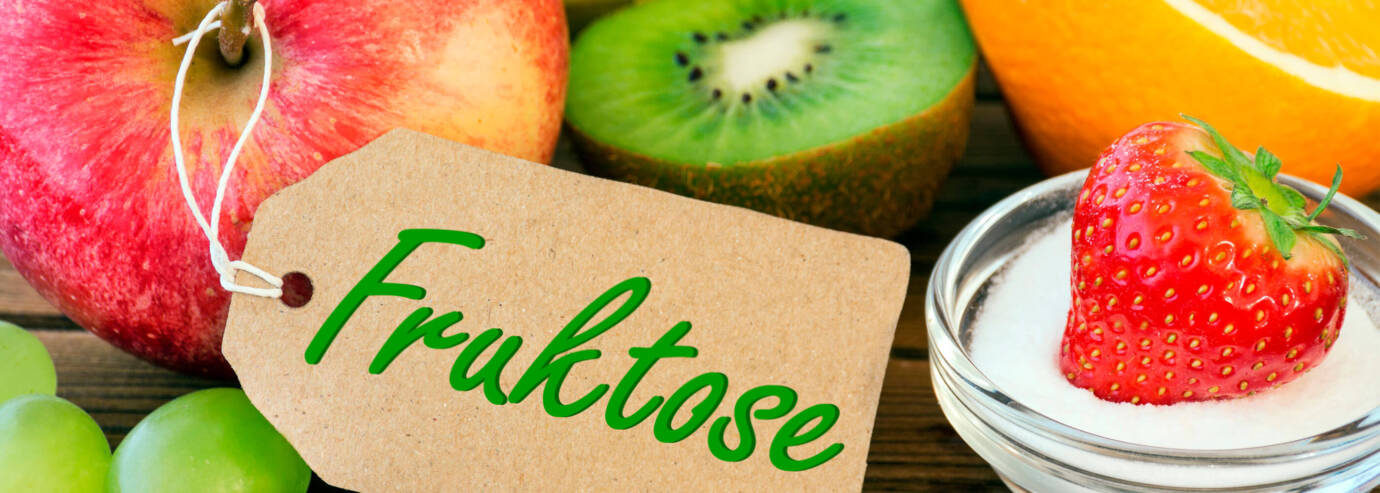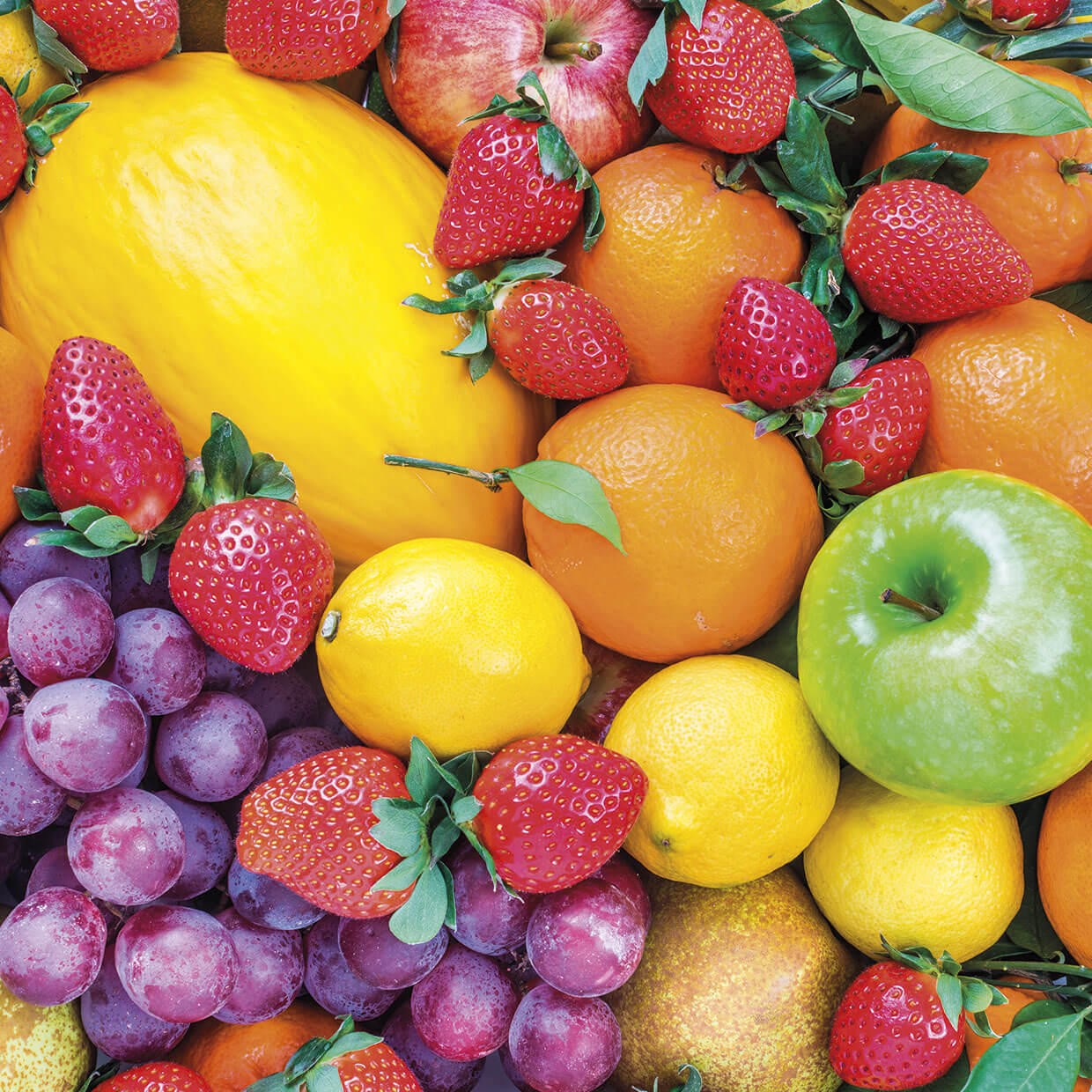Information on fructose intolerance
Approximately 30 percent of the German population have problems when they consume fructose – a condition known as fructose intolerance or fructose malabsorption. The body can only absorb a limited amount of fructose in the small intestine.
Despite the statistics showing that a lot of people struggle with fructose consumption, fructose intolerance is far less well-known than gluten intolerance (celiac disease) or lactose intolerance. This may be due to the fact that many articles have been published discussing lactose and gluten intolerance, and that supermarket shelves feature labels to aid those affected. People suffering from lactose intolerance have access to a wide range of products which are marked with a «lactose-free» label. However, for people suffering from fructose intolerance, there are no labels on apples, pears or cherries providing information on the fructose content of these fruits. The symptoms displayed in the event of fructose intolerance can vary greatly, depending on the amount consumed.
We hope to bring more attention to fructose and its effects in the intestine and have compiled a few essential facts on fructose intolerance for you.

What is fructose intolerance?
Fructose (fruit sugar) is a carbohydrate and belongs to the category of monosaccharides (simple sugars). In the small intestine, fructose is split into individual molecules before being absorbed by the mucous membranes. The fructose transport protein GLUT5 allows the molecules to be transferred to the bloodstream, after which they are metabolised in the liver.
If the proteins in the small intestine are unable to transport the fructose into the blood, it then moves into the large intestine. Here, bacteria quickly split the fructose up, creating gases and fatty acids, which can result in unpleasant symptoms.
There are two types of fructose intolerance:
Type 1: Intestinal fructose intolerance
This form is also known as fructose malabsorption and is the most common form of fructose intolerance. It is caused by a defective fructose transport system in the small intestine.
Type 2: Hereditary fructose intolerance (HFI)
This type of fructose intolerance is a very rare congenital defect of the fructose metabolism.

What are the symptoms of fructose intolerance?
Short-term symptoms may include:
- Flatulence (sometimes with corresponding, often unpleasant smelling intestinal gases)
- Nausea
- Bloatedness
- Vomiting
- Soft stool up to diarrhoea
- Constipation
- Stomach pain and/or cramps
Other diffuse symptoms may also occur:
- Headaches
- Acid reflux
- Tiredness
- Fatigue
- Sleep problems
- Dizziness
Some studies have shown that people with fructose intolerance display symptoms of depression more often than those who do not suffer from fructose intolerance. It would seem that the tryptophan metabolism, which may be impaired in the event of fructose intolerance, plays an important part here. Our bodies need tryptophan in order to produce the hormone serotonin. In turn, serotonin is important in regulating our moods. If our bodies are lacking this hormone, the deficiency will very likely impact our mood. Initial signs of depression can include:
- Apathy
- Listlessness
- Concentration difficulties
- Mood swings
- Exhaustion
If you experience symptoms of this nature, you should discuss them together with other complaints with your doctor. They may provide valuable insight during the diagnostic process.
How can I test to see whether I suffer from fructose intolerance?
If you suspect that you suffer from fructose intolerance, you should keep a symptoms diary before visiting a doctor. As the symptoms often occur with a delay, this approach allows them to be viewed in isolation.
To start, the patient should completely avoid fructose for between two and four weeks, while noting all consumed foods and possible complaints in their symptoms diary. Avoiding fructose should result in the symptoms abating.
Following an extended abstention period, the body is then ready for a test phase, which generally lasts around six weeks. During this test period, the patient begins to eat small amounts of foods with low amounts of fructose, such as bananas, raspberries or kiwis. The diary helps keep track of how the body reacts to certain foods.
If it is not possible to recognise a pattern after around ten weeks, it is recommended to go to a doctor.

How is fructose intolerance diagnosed?
Symptoms of fructose intolerance do not occur directly after eating, as the fructose takes a while to end up in the large intestine. This can take anywhere between 20 minutes and several hours. This delay makes it difficult to determine the link between diet and symptoms. Many sufferers therefore relate their symptoms to foods which have nothing to do with their complaints.
A breath test is used to diagnose fructose intolerance. The test comprises the patient drinking a predetermined amount of fructose solution on an empty stomach. At regular intervals, the patient then blows into a special device which measures the hydrogen content in their breath. Hydrogen is released when the bacteria in the large intestine break down fructose. The more fructose the bacteria have to process, the larger the amount of hydrogen released, which we then exhale. If a certain value is exceeded and typical symptoms occur, the assumption of fructose intolerance can be made.
Caution: This test is not to be performed for hereditary fructose intolerance as the effects may result in life-threatening hypoglycaemia.

Which foods contain fructose?
Foods with a natural source of fructose:
- Apples, pears, plums, apricots etc.
- Dried fruit
- Fruit juices
- Jams
- Fruit yoghurt
Foods in which fructose is added industrially:
- Lemonades
- Diet and light products
- Confectionery
Many ready-made products we would not even suspect can contain “hidden” fructose – sweeteners may be added which are rich in fructose. This is often the case for corn syrup or agave nectar. It is therefore important to carefully check the ingredients. If you suffer from fructose intolerance, there are different helpful apps specialising on this topic.
What can I eat if I suffer from fructose intolerance?
As an adult, and depending on the severity of your intolerance, the following foods are only allowed in limited amounts.
Vegetables low in fructose
- Broccoli
- Cauliflower
- Peas
- Cucumbers
- Green beans
- Carrots
- Chards
- Mushrooms
- Radishes
- Raphanus
- Celery
- Asparagus
- Spinach
- Tomatoes
- Courgette
- Cabbages, such as Chinese cabbage, kale, white cabbage – this includes sauerkraut
- Chicory, lettuce, corn salad
Always keep the different fructose content in mind when choosing your portion size.
Rhubarb and lemons are allowed, as are potatoes occasionally – however, these must be stored for at least 10 to 20 days, then peeled, sliced and soaked in water for a day. Rice and pasta products are better suited. Bread rolls and all types of bread produced without sugar, honey, syrup or sugar alcohols can also be included – in moderation – in your menus.
Did you know? Many SteviaSweet products are free of fructose. You can recognise them quickly from the “fructose-free” label. Do you have any questions? Please contact our customer service.